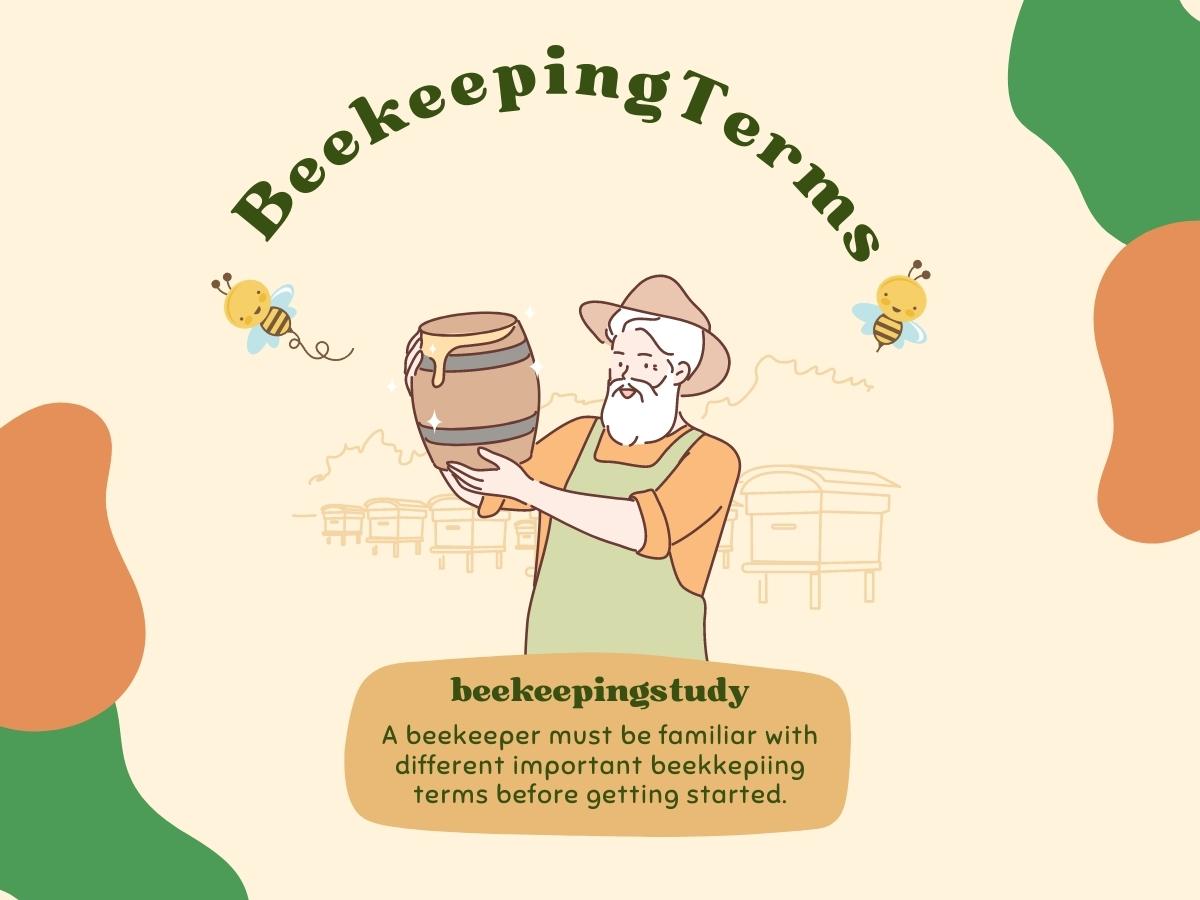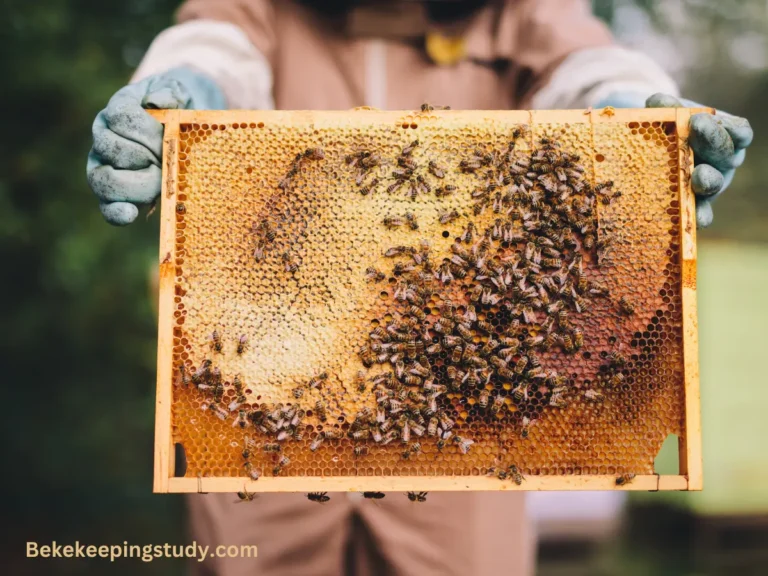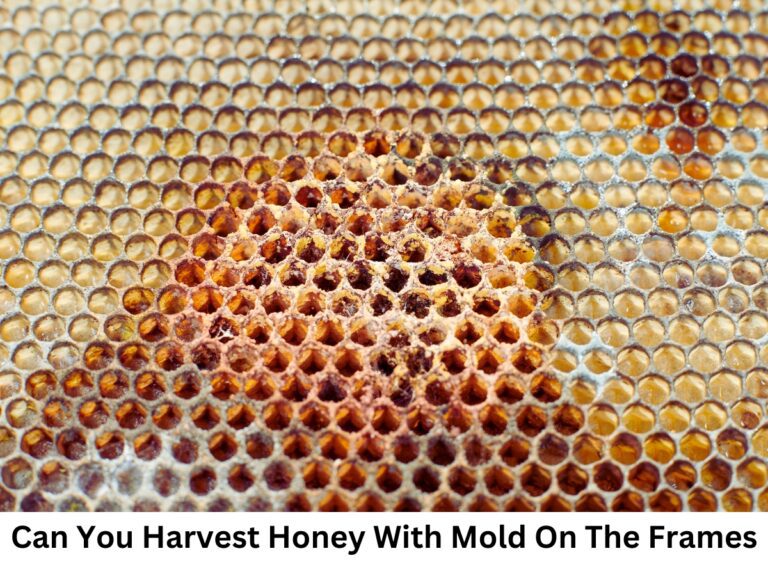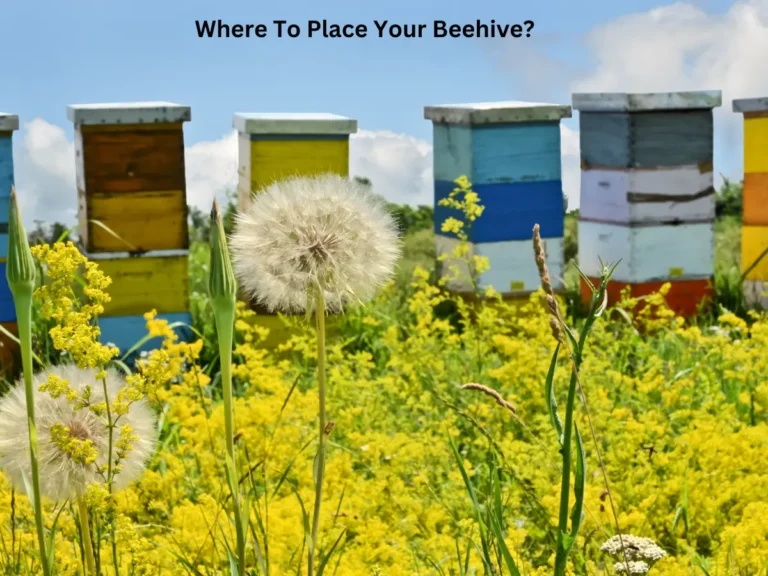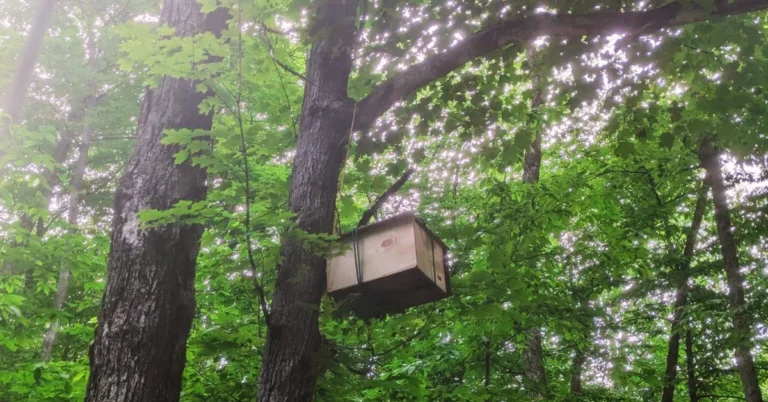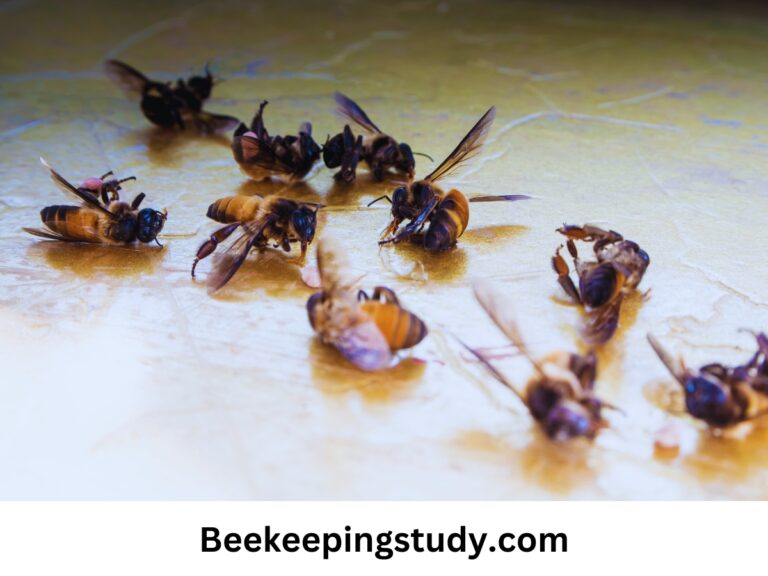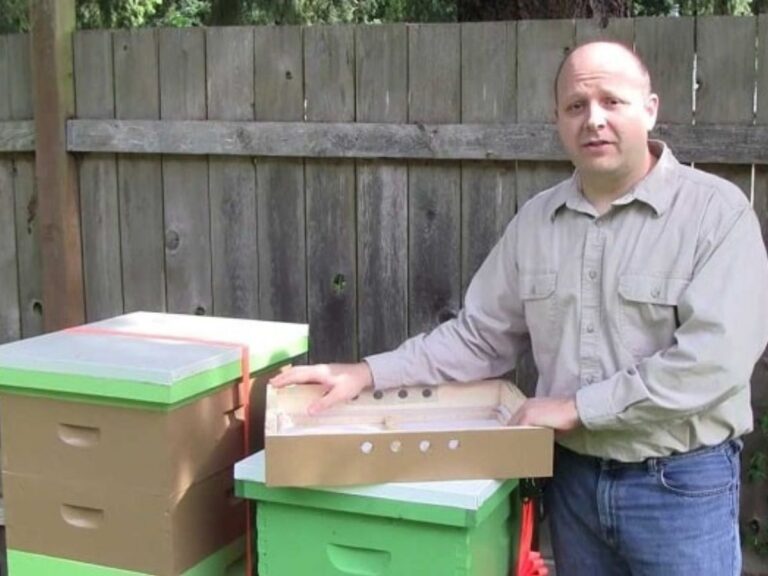75+ Beekeeping Terms That Every Beekeeper Must Know
When you start something new, you must be familiar with every important term related to what you are going to do. Because you need an idea about the necessary elements you are going to use frequently. Otherwise, You will face difficulties during work.
Beekeeping is not anything more exceptional than that. Whatever it is your hobby or business you must familiar with the beekeeping terms that frequently used during hive and colony management.
Beekeeping is definitely not a rocket science. You can’t expect to learn everything in one day. But before getting started or if you just started you must have an idea about the elements and the terms related to beekeeping.
That’s what I am going to teach you throughout this post. It’s not possible to show everything related to beekeeping in one post. Also, in different regions, beekeepers use different terminology. But there are so many common terms that almost every beekeeper needs to be familiarized with. That’s what I am going to share with you today.
Why It Is Important To Get Familiarized With Beekeeping Terms?
Well, I have already told you that before starting anything you must be familiar with related terms of that particular thing. It’s not uncommon to have some people who will argue why we need to learn related terms.
Think about making a food for example chicken tenders. You want to make this dish at home. So, if you don’t have any idea about the ingredients required to make this food then how do you make this?
Obviously, you can’t prepare the dish with only chicken. You must be familiar with eggs, cornflowers, bread crumbs, cheese, etc. Otherwise, you won’t be able to prepare the dish by yourself.
The same thing goes for beekeeping. You can’t start beekeeping by just having knowledge about bees. You must have proper knowledge about the terms related to bees and beekeeping. Hive management, different hive tools, and so on.
Hopefully, now you understand the importance of learning different terms to be successful in the beekeeping journey.
Different Important Beekeeping Terms
First of all, let’s learn What is the technical term for beekeeping? Well, beekeeping has a technical term and it is called “Apiculture”.
So, if the technical term for beekeeping is apiculture, can you guess What is a beekeeper’s professional term? Well, a beekeeper is help to grow the apiary that’s why he is called an “Apiarist”.
A Brief History Of Beekeeping
It’s common to have the question Who named this creature as a bee? Well, bees appeared before human civilization. The word bee came from the old English word “bēn.” Bees have been seen almost a decade thousand years ago. Nobody knows who first named this creature “bee”. From Ancient people’s era, this creature has been called “bee” because of its appearance and nature.
Who is the father of modern beekeeping?
“Johann Dzierzon” is known as the father of modern beekeeping. Famous modern beehives are created using his design. If you are interested to learn about him check this Wikipedia post about Johann Dzierzon. Lorenzo Lorraine Langstroth is known as the father of American beekeeping.
Now you might have a question who is the first beekeeper?
It is still unknown about the exact person who started beekeeping. As this clear humans started beekeeping since ancient times. At least 4.5 thousand ago humans first started keeping bees. But in 1840 Moses Quinby started beekeeping for the first time commercially. That’s why he is considered the first modern beekeeper.
Important Terms Related To A Bee Colony
Colony: A colony refers to the social area which is run by a specific king or queen. For example in a bee colony, there is only one queen. And the queen controls the entire colony. All the bees of the colony have equal rights. They live together and work together for the betterment of the colony. There are three types of bees in a colony. Queen, drone, and nurse bee.
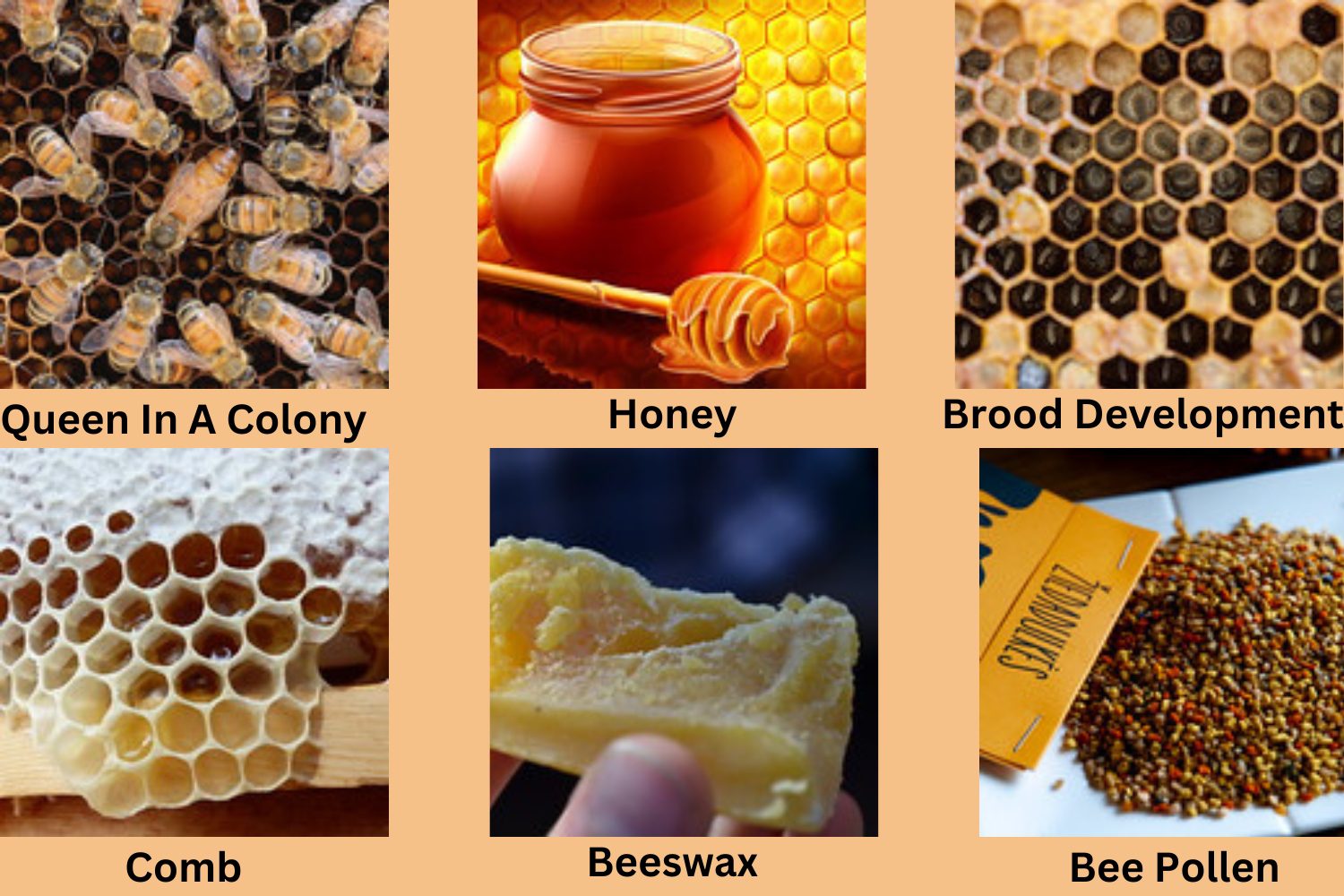
You might have a question What is known as queen bee, drone bee, and nurse bee?
Queen Bee: The only reproductive member of the entire colony. A queen bay lays almost 800,000 eggs in her lifetime. She is the leader of the colony. All of the other bees are obedient to her. Queen bee releases pheromone which instruct and run the entire colony.
Drone Bee: These are the male bees who don’t have any work without mating with the queen in their lifetime.
Nurse Bee: These are also known as labor bees who work for the welfare of the entire colony for their whole life. Honey collection, taking care of queen and brood bees, providing security to the entire colony, and every other work for the betterment of the colony are ensured by nurse bees. They are called nurse bees because they take care of the brood and queen larvae from the day the current queen lays eggs.
Brood: The egg, larvae, and pupae state through which the life of a bee begins is called brood bee. As a beekeeper, you must learn how to identify brood bees inside a hive and how to read brood patterns.
Brood Chamber: Brood chambers are the cells where the queen lays eggs and nurse bees take care of broods to raise.
Swarm: In simple words, a collection of bees is called a swarm. So, How many bees are in a swarm? The number of bees in a swarm can be 1,000 to even up to 50,000 depending its type and the geographical region.
Honey: A sweet brownish fluid made by bees from pollen and nectar collected from flowers. Honey contains sucrose and fructose, and high protein and nutrients. If you want to know What’s another word for honey? Then you can say “flower juice” as other words for honey.
Do you know there is a special type of honey known as royal honey? So, What Is Royal Honey? Royal honey is a special type of honey produced by nurse bees to feed the queen at the larvae stage. During the brood stage queen bees are given extra care. All other bees are fed with normal flower juice. But the queen brood was developed by feeding highly nutritious “royal jelly” also called royal honey.
Beeswax: It is a complex element produced by bees to create honeycombs. Beeswax is used for producing candles.
Comb: Hexagonal cells produce by honey and beeswax where broods are raised.
Bee scout: Especially, the older worker bees known as scout bees those who know very well about food sources and new suitable places to swarm from near to very far locations from their current home.
Mating Flight: When a queen bee goes out of her cell and fly to mate with drone bees for reproduction purpose is known as mating flight.
Nectar: The juice produces from flowers and contains sucrose and fructose.
Nectar Flow: When there is a lot of flower present to collect excessive pollen. Bees collect pollen during nectar flow to eat and store for the future.
Pheromone: A special hormone released by queen bees that helps the bees to identify their own colony. The pheromone released by the queen’s body guides the worker bees to perform a specific task.
Wax Glands: Secret part present in the abdomen of a bee using which the natural secretion of beeswax takes place.
Bee Pollen: The pollen collected by bees from flowers. Bee pollen contains lot of vitamins and other nutrients. Bee pollen usually do not expire but lost it’s quality with time. If you can keep bee pollen effectively its quality will last longer.
Important Terms For Hive Management During Beekeeping
Apiary: Apiary basically means a suitable house located by a beekeeper to keep honey bees. It’s best describe as the best place for honey bees to leave and store honey. A question may arise Why is it called an apiary? Well, it came from the Latin word “Apis” which means “bee” house of apis that is bees is named as “apiary”.
Beehive: While we say the house for honey bees is called an apiary, but in general the hive that beekeepers use to keep any type of bee is well known as a beehive. A beehive used for beekeeping is usually made with wood, plastic, wax, etc.
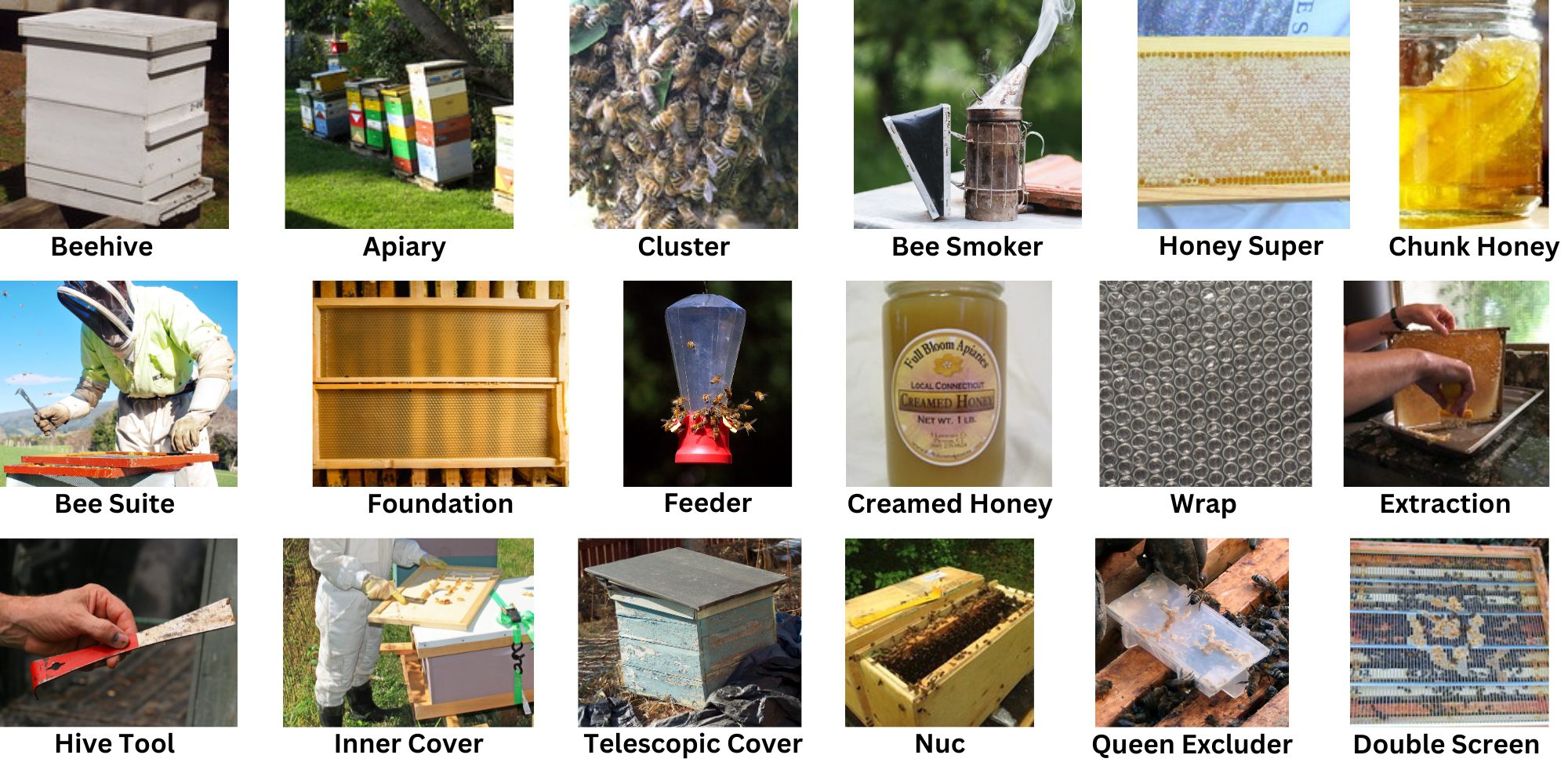
If you noticed any bee cluster leaving in a house made with wax it is also called a beehive. But it is a natural beehive. While the house of bees used for beekeeping is an artificial house specially designed to give bees a suitable and safe home to live in.
If you are scared by seeing a beehive in your house wall then call for an expert. Don’t try to remove it on your own without having proper experience.
Cluster Of Bees: A cluster of bees means a large portion of a colony or an entire colony is closed together tightly by forming a ball-like formation. This behavior is especially seen during winter inside a beehive. Or when a bee colony is swarmed and unable to find a perfect place to live they form a cluster in a bunch of a tree, wood, or other mountain. Beekeepers like to catch swarms in trees to expand their apiary.
Bee Smoker: A bee smoker is used in beekeeping to smoke over bees to calm them. For beginners, you must learn first how to use a bee smoker before start using it. A bee smoker is really an important equipment for hive inspections.
Chunk honey: It means a piece of raw honeycomb that is placed in a jar of liquid honey.
Bee Suite: It is the protective suite that protects beekeepers from getting stung by bees during a hive inspection. Do you know how do beekeepers not get stung? Actually, it is because of the techniques and skills they gain to handle bees without getting stung. Usually, beekeeping suits are made with white clothes.
Comb Foundation: In simple words, a comb foundation is an artificial comb surrounder usually made with plastic to help bees to build combs. It has a supportive surrounding around the comb.
Creamed Honey: It refers to crystalized honey when honey is not kept within the required temperature. A built in honey warming cabinet can prevent honey crystalization.
Double Screen: It is a double-layer screen containing a wooden frame that is used to separate two different colonies in a single beehive.
Drawn Comb: A cell built by bees within a foundation that is ready for honey or new eggs.
Feeder: It is a vessel designed to feed bees pollen and honey or equivalent foods. Popular bee feeders are top feeders, poly Ashford feeders, gravity feeders, etc.
Drifting of bees: Drifting of bees referred a bee leaving its own colony and starting living with any other colony. It can be happened both intentionally or unintentionally because of unable to identify own colony.
Honey Extraction: It simply refers to the process of collecting honey from a beehive.
Extractor: A tool used for honey extraction.
Honey Warming Cabinet: It is a device used to keep honey fresh and liquefy crystallized honey.
Moldy Frame: Honey frame that has molds on it. Abandoned beehives might have moldy frames having caped honey. Sometimes beekeepers need to harvest honey from molds on the frames.
Moisture board and quilt board: Beehive moisture board and quilt board are used to control extra moisture inside a beehive during the cold. You can create a beehive moisture board or quilt board on your own very easily.
Super: It is the hive box usually placed over the brood box to collect and store surplus honey.
Grafting: It is the manual process of transferring worker larvae in place of the queen larvae. This actually done when the queen larvae have died.
Grafting Tool: A thin needle designed for transferring worker larvae into the queen larvae cell.
Granulation: Formation of sugar which is responsible for the crystallization of honey.
Harvest: Process of collecting honey from a hive.
Swarm Trap: It is a special bee catching trap created to attract and catch bees. You can make a bee swarm trap on your own at a cheap cost.
Abandoned Beehive: An Abandoned beehive means which once contains a colony and currently there is no colony. Either the colony swarms away or died. You can reuse an abandoned beehive instead of throwing it in the dustbin.
Hive Stand: It is an element that provides support to the beehive.
Hive Tool: A metal device that is used for various purposes like opening a beehive, scrapping honey and debris from frames, etc.
Inner Cover: Extra moisture protective thin layer cover used below the telescopic cover.
Telescoping Cover: Extra cover used to protect beehive from rain, storm, and other external interferences.
Nuc: Also known as nucleus usually contains a small number of bees and use to start a new colony. A beginner beekeeper usually purchases a nuc and then transfers it to a beehive to start his first colony.
Package Bee: A certain amount of bees kept in a special package purchased from a different place.
Pollen Basket: Bee lower body element which is used to carry pollen to the hive.
Primary Swarm: Usually the first swarm of the colony takes place with the old queen.
Secondary Swarm: The swarm that takes place after the primary swarm.
Hive Splitting: It is a technique of converting one beehive into 2. A beekeeper must know how to split a beehive in order to prevent swarming.
Queenless Hive: A beehive that doesn’t have any queen alive. A queenless hive must be requeened otherwise the colony won’t survive.
Queen Clipping: Process of making the queen unable to fly. This is usually done by removing any portion of her wings to prevent swarming.
Queen Excluder: A plastic box placed in the beehive to restrict the movement area of the queen.
Weak Colony: A colony that becomes weak because of losing its queen or being infected by any disease.
Robbing: It simply means stealing a hive’s honey by the worker bee of other colonies which is not a member of this hive. Usually, worker bee work to guard the honey of the colony. When they found a bee from any other colony trying to steal honey they kill it instantly.
Bee Wrap: It is a thin layer cover or element used to insulate the beehive during the cold.
Slatted Rack: It is specially used in the Langstroth hive and placed between the bottom board and the lowest brood box.
Solar Wax Melter: A box specially designed to use in a beehive capable of melting honey by absorbing heat from sunlight.
Supersedure: Replacing the old weak queen with the newly reared queen.
Spur Wire Embedder: It is a handheld device used for reinforcing the foundation.
Uncapping: Simply refers to removing wax and preparing the honey to be extracted.
Uniting: Combining multiple small colonies to form a large colony.
Different Bee Disease & Treatment Related Terms
American foulbrood: It is a bacterial brood disease in honey bee colonies that can weaken or kill the colony. This disease is easily identifiable by inspection. So, taking early steps can prevent the spread of the disease.
European foulbrood: It is also a bacterial disease similar to American foulbrood. It attacks the brood cells first and then spread through the entire colony via nurse bees.
Terramycin: Antibiotic applied in beehives to control European and American foulbrood diseases.
Varroa Mite: Varroa mite is the most dangerous virus that destruct a lot of colonies every year. The female varroa injects eggs within brood cells. The larvae of varroa start eating the larvae of bees. Then the adult varroa also starts eating adult bees as a result the colony is getting destroyed. It is a spreadable disease. So beekeepers need to take proper care of honey bee colonies and prevent the colony from getting attacked by varroa mites.
Acarapisosis: It is a honey bee disease caused by tarsonemid mite.
Aethina Tumida: It is the parasite and predator in honey bee colonies that can eat brood and honey.
Sacbrood: A viral disease that attacks larvae in honey bees.
Tropilaelaps infestation: These are the parasites in honey bee colonies that can cause damage to both larvae and adult honey bees. Infection of these mites can be identified by reading the irregular brood patterns.
Paradichlorobenzene: Used to fumigate combs against wax moths.
Nosema: A disease that appears in honey bees caused by the Protozoan Nosema Apis.
Final Words On Different Beekeeping Terms
So, these 75+ important beekeeping terms might help you a lot to learn beekeeping as a beginner. Remember learning new things in beekeeping will never end. When you get started with beekeeping you will learn plenty of other terms related to your apiculture.
I will keep updating this post in the future to add more important different beekeeping terms. If you think that there are some other important terms that I’ve missed but need to be added to the list feel free to tell me using the comment section.

